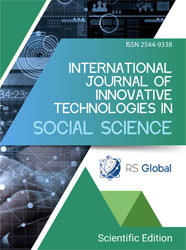SURGICAL TECHNIQUES FOR SPORTS HERNIA REPAIR IN ATHLETES - MINIMIZING COMPLICATIONS AND ENSURING SAFE RETURN TO SPORT
Abstract
Athletic pubalgia or sports hernia is a multifactorial and dynamic condition frequently found in sportsmen engaged in high-level sports involving sudden change of direction with repetitive stress to the groin. The present surgical strategies to repair sports hernia in sportsmen are discussed below, keeping in mind the precautions against complications and early safe return to sport. The pathophysiology of sports hernias is composed of core instability, recurrent microtrauma, and potential systemic and genetic connective tissue disorders. Proper diagnosis - aided by both physical examination and high-technology imaging studies such as MRI and dynamic USG - is needed to distinguish true hernias from the myriad other causes of groin pain. While conservative treatment in certain cases may be beneficial, surgery is the yardstick for symptomatic or refractory athletes. The open and laparoscopic techniques, including the Lichtenstein, TAPP, and TEP techniques, share similar benefits based on anatomical and technical criteria. Innovations such as robot-assisted repair and biomaterial creation of biocompatible mesh material, i.e., self-adhesive and biologic types, have also promoted good results. Prevention of early postoperative complication, in the form of chronic pain and infection, is founded on careful technique selection, mesh optimization, and reduction in risk factors. A carefully planned, phase-specific rehabilitation protocol - early mobilization, core strengthening, and sport-specific training is crucial to successful functional recovery. Last but not least, success with surgery relies on careful patient selection, rehabilitation compliance, and coordination of a multidisciplinary provider. This combined strategy provides superb rates of return to play and results on the long term from a clinical point of view, such that surgical treatment is an extremely effective method of treatment of sports hernia in sporting people.
References
Santilli O, Santilli H. Narrative review of long-standing groin pain in athletes. Retrospective analysis of over 12 000 patients. Hernia. 2025 Jan 27;29(1):81. doi: 10.1007/s10029-024-03229-z. PMID: 39869230.
Kopscik M, Crisman JL, Lomasney L, Smith S, Jadidi S. Sports Hernias: A Comprehensive Review for Clinicians. Cureus. 2023 Aug 10;15(8):e43283. doi: 10.7759/cureus.43283. PMID: 37692688; PMCID: PMC10492628.
Elattar O, Choi HR, Dills VD, Busconi B. Groin Injuries (Athletic Pubalgia) and Return to Play. Sports Health. 2016 Jul;8(4):313-23. doi: 10.1177/1941738116653711. Epub 2016 Jun 14. PMID: 27302153; PMCID: PMC4922526.
Kopelman D, Kaplan U, Hatoum OA, Abaya N, Karni D, Berber A, Sharon P, Peskin B. The management of sportsman's groin hernia in professional and amateur soccer players: a revised concept. Hernia. 2016 Feb;20(1):69-75. doi: 10.1007/s10029-014-1322-9. Epub 2014 Nov 8. PMID: 25380561.
Bou Antoun M, Reboul G, Ronot M, Crombe A, Poussange N, Pesquer L. Imaging of inguinal-related groin pain in athletes. Br J Radiol. 2018 Dec;91(1092):20170856. doi: 10.1259/bjr.20170856. Epub 2018 Jul 25. PMID: 29947268; PMCID: PMC6319843.
Bisciotti GN, Bisciotti A, Bisciotti A, Auci A. What the Radiologist Needs to Know About Sport Hernias: A Systematic Review of the Current Literature. Diagnostics. 2025; 15(6):785.
Henriksen NA. Systemic and local collagen turnover in hernia patients. Dan Med J. 2016 Jul;63(7):B5265. PMID: 27399987.
Bracale U, Peltrini R, Iacone B, Martirani M, Sannino D, Gargiulo A, Corcione F, Serra R, Bracale UM. A Systematic Review on the Role of Matrix Metalloproteinases in the Pathogenesis of Inguinal Hernias. Biomolecules. 2023 Jul 14;13(7):1123. doi: 10.3390/biom13071123. PMID: 37509159; PMCID: PMC10377325.
Jorgenson E, Makki N, Shen L, Chen DC, Tian C, Eckalbar WL, Hinds D, Ahituv N, Avins A. A genome-wide association study identifies four novel susceptibility loci underlying inguinal hernia. Nat Commun. 2015 Dec 21;6:10130. doi: 10.1038/ncomms10130. PMID: 26686553; PMCID: PMC4703831.
Minnich JM, Hanks JB, Muschaweck U, Brunt LM, Diduch DR. Sports hernia: diagnosis and treatment highlighting a minimal repair surgical technique. Am J Sports Med. 2011 Jun;39(6):1341-9. doi: 10.1177/0363546511402807. Epub 2011 Apr 19. PMID: 21505079.
Garvey JF. Computed tomography scan diagnosis of occult groin hernia. Hernia. 2012 Jun;16(3):307-14. doi: 10.1007/s10029-011-0899-5. Epub 2011 Dec 14. PMID: 22167621.
Fitzgibbons RJ Jr, Ramanan B, Arya S, Turner SA, Li X, Gibbs JO, Reda DJ; Investigators of the Original Trial. Long-term results of a randomized controlled trial of a nonoperative strategy (watchful waiting) for men with minimally symptomatic inguinal hernias. Ann Surg. 2013 Sep;258(3):508-15. doi: 10.1097/SLA.0b013e3182a19725. PMID: 24022443.
Drolshagen H, Bhavaraju A, Kalkwarf KJ, Karim SA, Reif R, Sexton KW, Jensen HK. Surgical and non-surgical treatment of inguinal hernia during non-elective admissions in the Nationwide Readmissions Database. Hernia. 2021 Oct;25(5):1259-1264. doi: 10.1007/s10029-021-02441-5. Epub 2021 Jul 3. Erratum in: Hernia. 2022 Feb;26(1):383. doi: 10.1007/s10029-021-02479-5. PMID: 34218347.
Messias BA, Nicastro RG, Mocchetti ER, Waisberg J, Roll S, Junior MAFR. Lichtenstein technique for inguinal hernia repair: ten recommendations to optimize surgical outcomes. Hernia. 2024 Aug;28(4):1467-1476. doi: 10.1007/s10029-024-03094-w. Epub 2024 Jun 20. PMID: 38900355; PMCID: PMC11297121.
Guillaumes S, Hoyuela C, Hidalgo NJ, Juvany M, Bachero I, Ardid J, Martrat A, Trias M. Inguinal hernia repair in Spain. A population-based study of 263,283 patients: factors associated with the choice of laparoscopic approach. Hernia. 2021 Oct;25(5):1345-1354. doi: 10.1007/s10029-021-02402-y. Epub 2021 Apr 10. Erratum in: Hernia. 2021 Oct;25(5):1407-1408. doi: 10.1007/s10029-021-02421-9. PMID: 33837883.
Andresen K, Rosenberg J. Transabdominal pre-peritoneal (TAPP) versus totally extraperitoneal (TEP) laparoscopic techniques for inguinal hernia repair. Cochrane Database Syst Rev. 2024 Jul 4;7(7):CD004703. doi: 10.1002/14651858.CD004703.pub3. PMID: 38963034; PMCID: PMC11223180.
Peltrini R, Corcione F, Pacella D, Castiglioni S, Lionetti R, Andreuccetti J, Pignata G, De Nisco C, Ferraro L, Salaj A, Formisano G, Bianchi PP, Bracale U. Robotic versus laparoscopic transabdominal preperitoneal (TAPP) approaches to bilateral hernia repair: a multicenter retrospective study using propensity score matching analysis. Surg Endosc. 2023 Feb;37(2):1188-1193. doi: 10.1007/s00464-022-09614-y. Epub 2022 Sep 26. PMID: 36156737; PMCID: PMC9943997.
Wake BL, McCormack K, Fraser C, Vale L, Perez J, Grant AM. Transabdominal pre-peritoneal (TAPP) vs totally extraperitoneal (TEP) laparoscopic techniques for inguinal hernia repair. Cochrane Database Syst Rev. 2005 Jan 25;2005(1):CD004703. doi: 10.1002/14651858.CD004703.pub2. Update in: Cochrane Database Syst Rev. 2024 Jul 4;7:CD004703. doi: 10.1002/14651858.CD004703.pub3. PMID: 15674961; PMCID: PMC8845481.
Hatewar A, Mahakalkar C, Kshirsagar S, Ram Sohan P, Dixit S, Bikkumalla S. From Meshes to Minimally Invasive Techniques: A Comprehensive Review of Modern Hernia Repair Approaches. Cureus. 2024 Aug 5;16(8):e66206. doi: 10.7759/cureus.66206. PMID: 39233930; PMCID: PMC11374351.
Ferrer Martínez A, Castillo Fe MJ, Alonso García MT, Villar Riu S, Bonachia Naranjo O, Sánchez Cabezudo C, Marcos Herrero A, Porrero Carro JL. Medial incisional ventral hernia repair with Adhesix® autoadhesive mesh: descriptive study. Hernia. 2023 Aug;27(4):911-917. doi: 10.1007/s10029-023-02766-3. Epub 2023 May 13. PMID: 37178428; PMCID: PMC10182549.
FitzGerald JF, Kumar AS. Biologic versus Synthetic Mesh Reinforcement: What are the Pros and Cons? Clin Colon Rectal Surg. 2014 Dec;27(4):140-8. doi: 10.1055/s-0034-1394155. PMID: 26106284; PMCID: PMC4477030.
Eriksen JR, Gögenur I, Rosenberg J. Choice of mesh for laparoscopic ventral hernia repair. Hernia. 2007 Dec;11(6):481-92. doi: 10.1007/s10029-007-0282-8. Epub 2007 Sep 11. PMID: 17846703.
Hawn MT, Gray SH, Snyder CW, Graham LA, Finan KR, Vick CC. Predictors of mesh explantation after incisional hernia repair. Am J Surg. 2011 Jul;202(1):28-33. doi: 10.1016/j.amjsurg.2010.10.011. PMID: 21741517.
Baylón K, Rodríguez-Camarillo P, Elías-Zúñiga A, Díaz-Elizondo JA, Gilkerson R, Lozano K. Past, Present and Future of Surgical Meshes: A Review. Membranes (Basel). 2017 Aug 22;7(3):47. doi: 10.3390/membranes7030047. PMID: 28829367; PMCID: PMC5618132.
Orenstein SB, Saberski ER, Kreutzer DL, Novitsky YW. Comparative analysis of histopathologic effects of synthetic meshes based on material, weight, and pore size in mice. J Surg Res. 2012 Aug;176(2):423-9. doi: 10.1016/j.jss.2011.09.031. Epub 2011 Oct 11. PMID: 22099590.
Liang MK, Clapp M, Li LT, Berger RL, Hicks SC, Awad S. Patient Satisfaction, chronic pain, and functional status following laparoscopic ventral hernia repair. World J Surg. 2013 Mar;37(3):530-7. doi: 10.1007/s00268-012-1873-9. PMID: 23212794.
Quiroga-Centeno AC, Quiroga-Centeno CA, Guerrero-Macías S, Navas-Quintero O, Gómez-Ochoa SA. Systematic review and meta-analysis of risk factors for Mesh infection following Abdominal Wall Hernia Repair Surgery. Am J Surg. 2022 Jul;224(1 Pt A):239-246. doi: 10.1016/j.amjsurg.2021.12.024. Epub 2021 Dec 24. PMID: 34969506.
Paajanen, H., Brinck, T., Hermunen, H., & Airo, I. (2011). Laparoscopic surgery for chronic groin pain in athletes is more effective than nonoperative treatment: a randomized clinical trial with magnetic resonance imaging of 60 patients with sportsman’s hernia (athletic pubalgia). Surgery, 150(1), 99-107.
Brown, A., Abrahams, S., Remedios, D., & Chadwick, S. J. (2013). Sports hernia: a clinical update. British Journal of General Practice, 63(608), e235-e237.
Palumbo, P., Massimi, F., Lucchese, S., Grimaldi, S., Vernaccini, N., Cirocchi, R., ... & Intini, S. G. (2022). Open surgery for sportsman’s hernia a retrospective study. Frontiers in Surgery, 9, 893390.
de Sa, D., Hölmich, P., Phillips, M., Heaven, S., Simunovic, N., Philippon, M. J., & Ayeni, O. R. (2016). Athletic groin pain: a systematic review of surgical diagnoses, investigations and treatment. British Journal of Sports Medicine, 50(19), 1181-1186.
Preskitt, J. T. (2011). Sports hernia: the experience of Baylor University Medical Center at Dallas. Proceedings (Baylor University. Medical Center), 24(2), 89-91. 4
Panici Tonucci, T., Aiolfi, A., Bona, D., & Bonavina, L. (2024). Does crural repair with biosynthetic mesh improve outcomes of revisional surgery for recurrent hiatal hernia?. Hernia, 28(5), 1687-1695.
Sheen, A. J., Montgomery, A., Simon, T., Ilves, I., & Paajanen, H. (2019). Randomized clinical trial of open suture repair versus totally extraperitoneal repair for treatment of sportsman's hernia. Journal of British Surgery, 106(7), 837-844.
Verrall, G. M., Slavotinek, J. P., Fon, G. T., & Barnes, P. G. (2007). Outcome of conservative management of athletic chronic groin injury diagnosed as pubic bone stress injury. The American journal of sports medicine, 35(3), 467-474.
Meyers, W. C., McKechnie, A., Philippon, M. J., Horner, M. A., Zoga, A. C., & Devon, O. N. (2008). Experience with “sports hernia” spanning two decades. Annals of Surgery, 248(4), 656-665.
Views:
15
Downloads:
6
Copyright (c) 2025 Marcin Markowski, Kacper Zielonka, Joanna Jasińska, Bartosz Dądela, Natalia Śliwa, Eliza Kawalska, Sara Langner, Szymon Gnitecki, Szymon Janczura, Maciej Borowski

This work is licensed under a Creative Commons Attribution 4.0 International License.
All articles are published in open-access and licensed under a Creative Commons Attribution 4.0 International License (CC BY 4.0). Hence, authors retain copyright to the content of the articles.
CC BY 4.0 License allows content to be copied, adapted, displayed, distributed, re-published or otherwise re-used for any purpose including for adaptation and commercial use provided the content is attributed.















